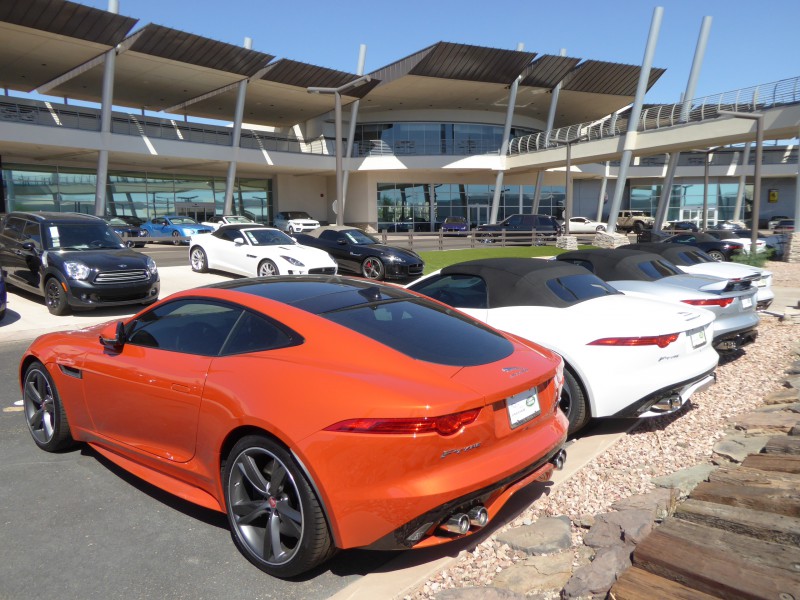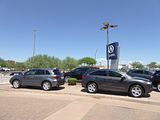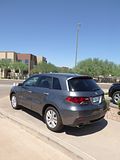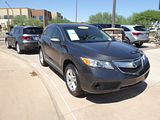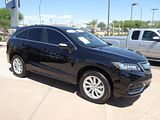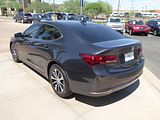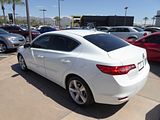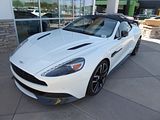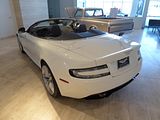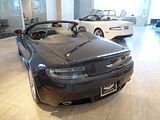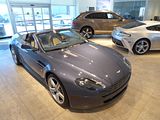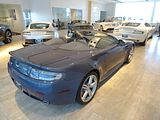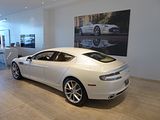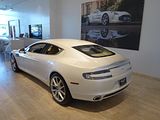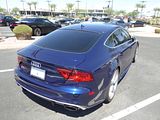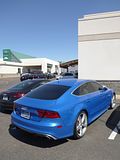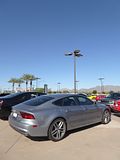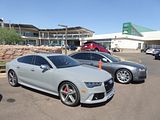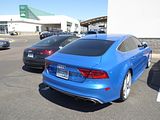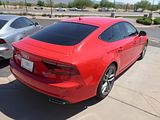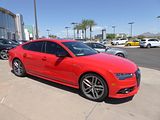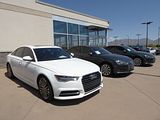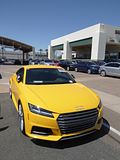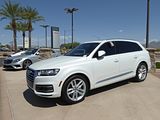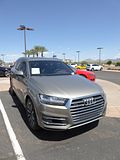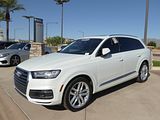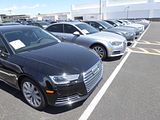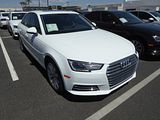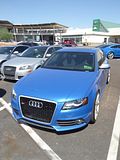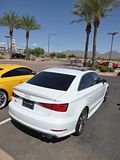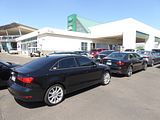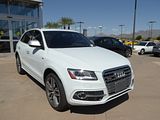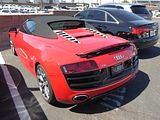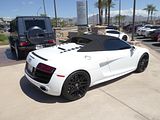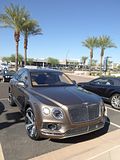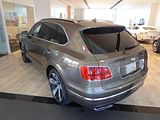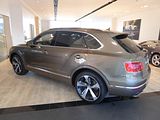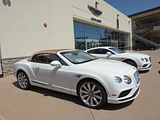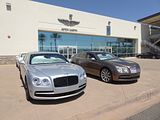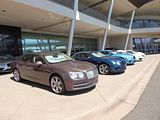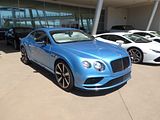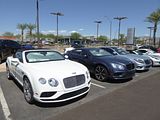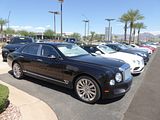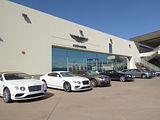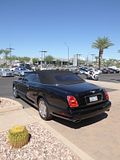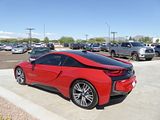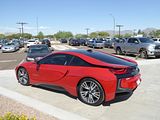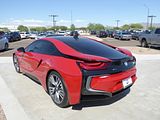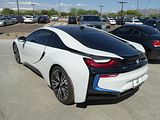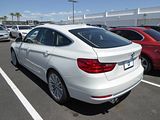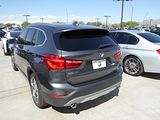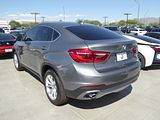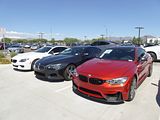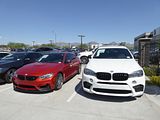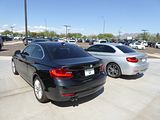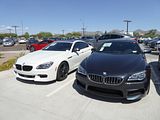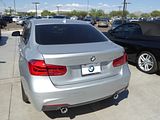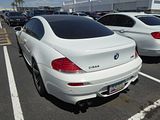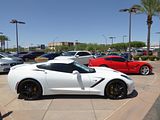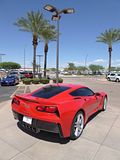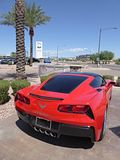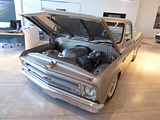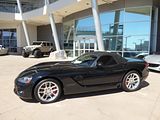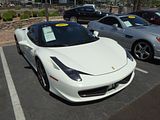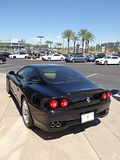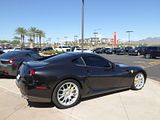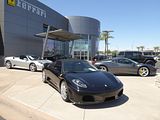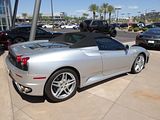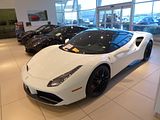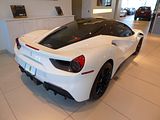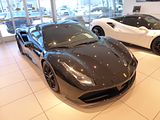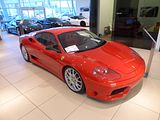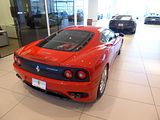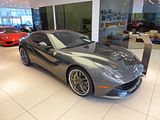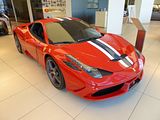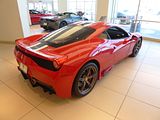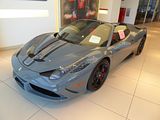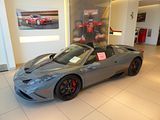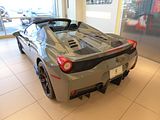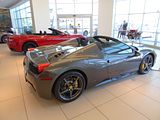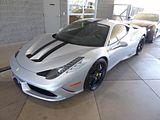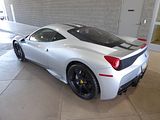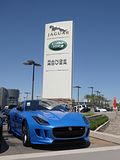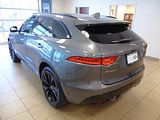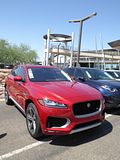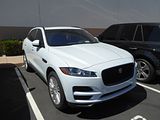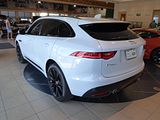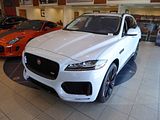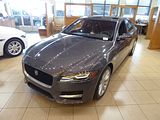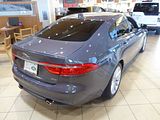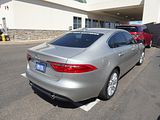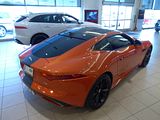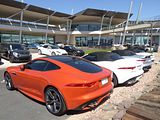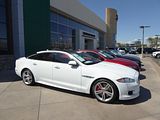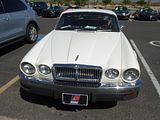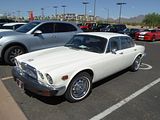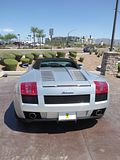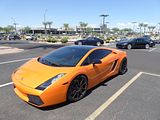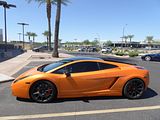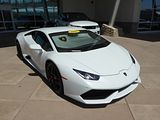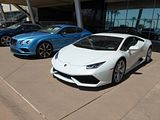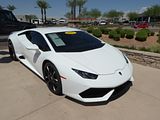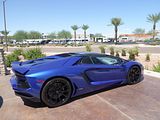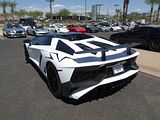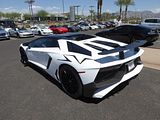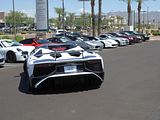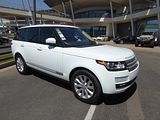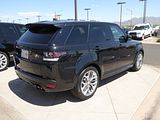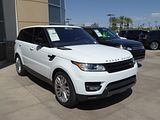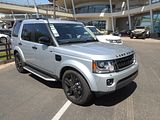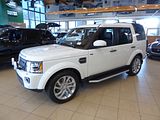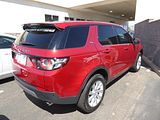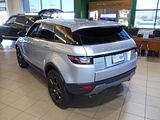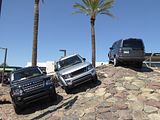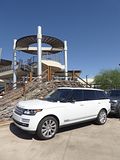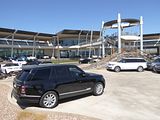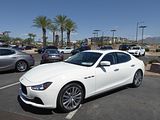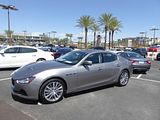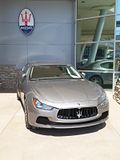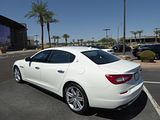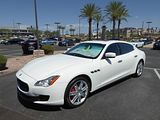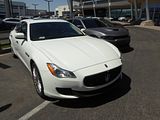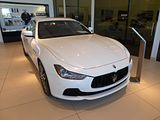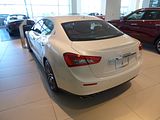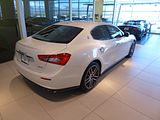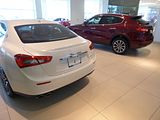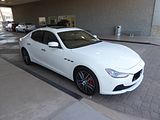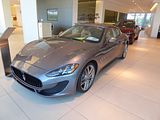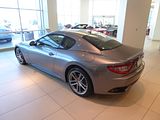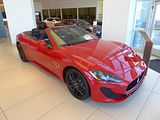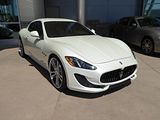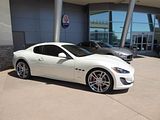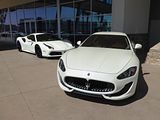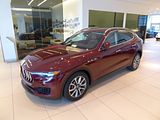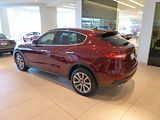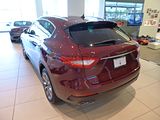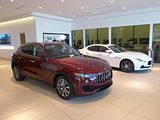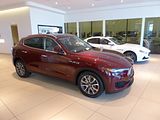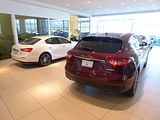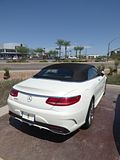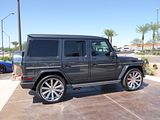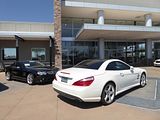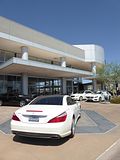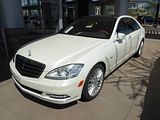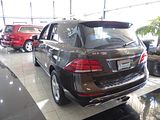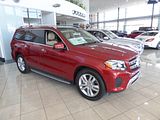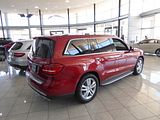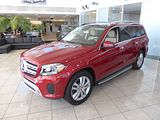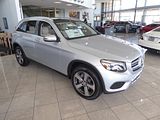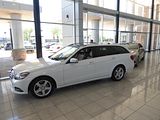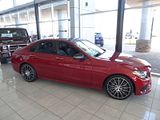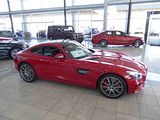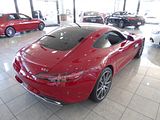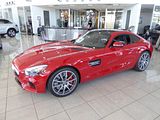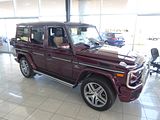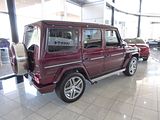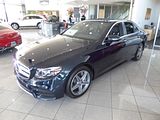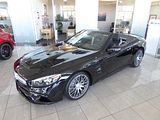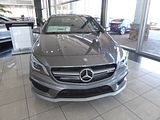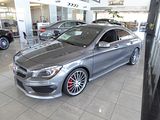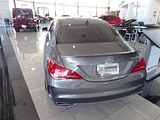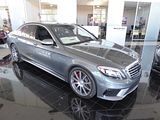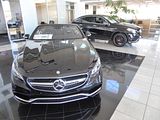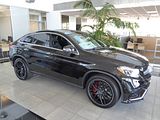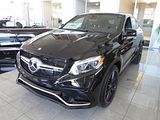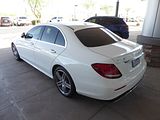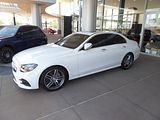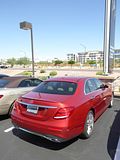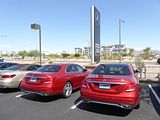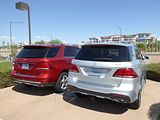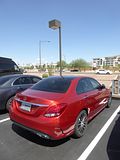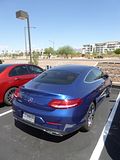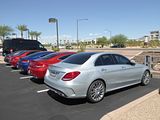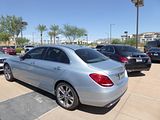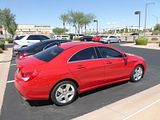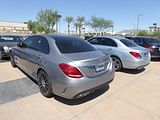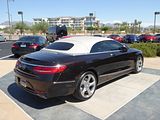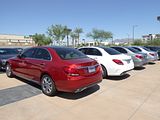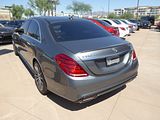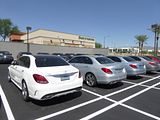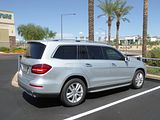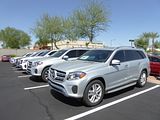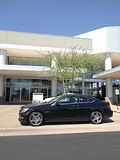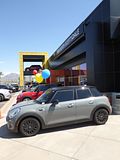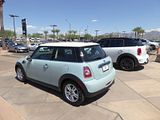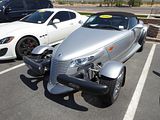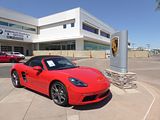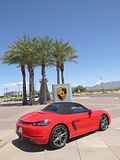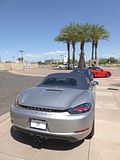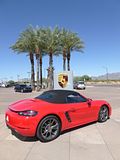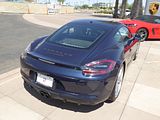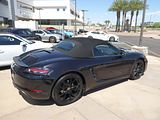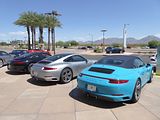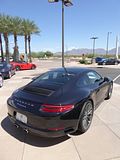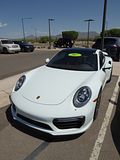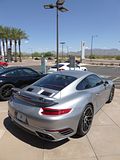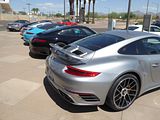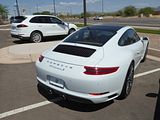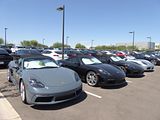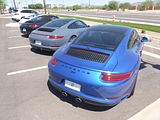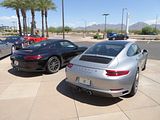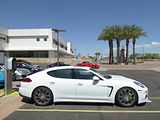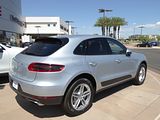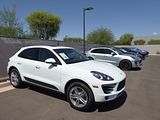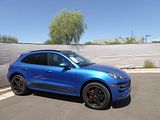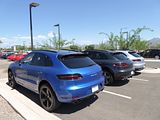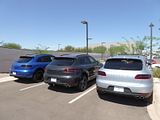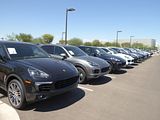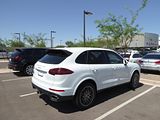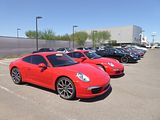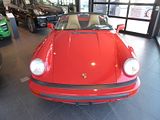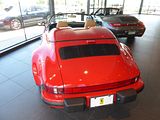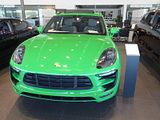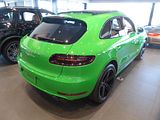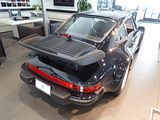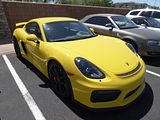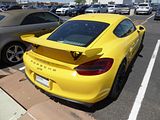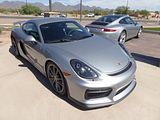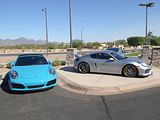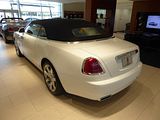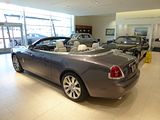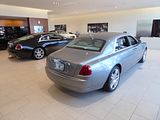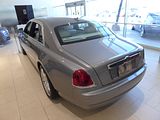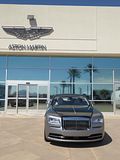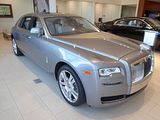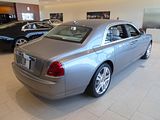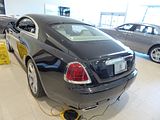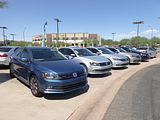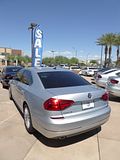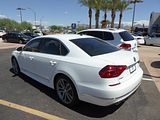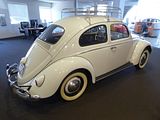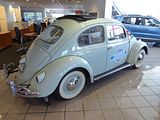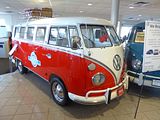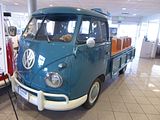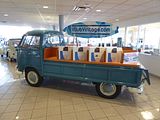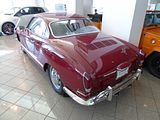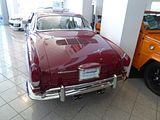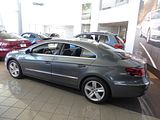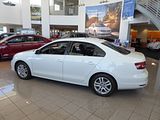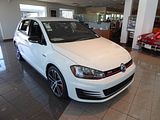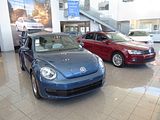Such are the vast array not just of model variants, but also optional features from colour and wheels, to trim inlays and other personalisation choices, that prospective purchasers of a new car in the UK are very used to the fact that to get the precise spec that they want, it will almost inevitably be a case of placing a factory order, and waiting, usually several weeks. “Wait” is not a word that resonates well with American buyers, though, who seemingly all live in a world of instant gratification. They expect to be able to walk into a car showroom, and not many minutes later, drive out with a new car that matches their exact wants. Accordingly, US dealers carry huge inventory, and this, combined with the fact that many dealers tend to be grouped together in one out of town area, means that you get something that is almost better than a Motor Show by visiting such a collection of dealers. There’s another thing which is different about the US market: the concept of the Model Year. No US State uses age-related registration plates like we do in the UK, and they do not really feel the need to do so, as every car is identified by its Model Year. This dates back to a time when cars would undergo significant change on an annual basis, with all-new designs produced to try to out-do the other domestic competitors. Wholesale changes to the bodywork every year are a thing of the past, but the Model Year concept lives on. The large-scale changeover happens around the end of Summer, though it is possible for a car to be released as early as the first week of one calendar year to be known as the next Model Year, ie the first 2017 cars could be sold as early as January 2016. By September, though, almost all the changes – most of which these days are spec related – have filtered through, and this gives the dealers the problem of needing to sell all their inventory for the Model Year that is just ending. This can lead to some spectacular discounts. It applies to the premium sector just as much as the regular part of the marketplace. And so a visit to a site like the collection of Penske Showrooms in Scottsdale – something I usually manage to include in my visits to the Phoenix area, this trip being no exception – will show ample evidence of the changeover, in this case from 2016 to 2017. What it also showed this time, was that with a lot of the 2016 cars sold and not that much of the new 2017 inventory yet on site, you can get a slightly empty looking facility, and that was the case for this late September visit. Even with stock somewhat depleted from levels sometimes seen here, there was still plenty of interest for my camera and to feature in this report. Here are the highlights:
ACURA
Of all the showrooms in the Penske Group on site here. it is the Acura one that I find easiest to walk past, and indeed most trips, that is exactly what I do. I think I would find it hard to be enthusiastic about a range of cars which has suffered from a severe beating with the Ugly Stick. The message does seem to have got across, as recent designs have toned down the gawky “beak nose” that was applied to everything in their range, in a quest to make their cars more “distinctive”. Perhaps Toyota and indeed Acura’s parent company Honda, both of whom have gone even further down the downright ugly street, will learn the same lesson. Somehow I doubt it, as Acura’s real problem was that sales of several of its models dropped sharply, with two of the cars in their range, finding themselves in the bottom ten of any vehicle on the US market. Those were the old RL and the weird ZDX, neither of which feature in the range any more. Sales of Acura, like so many brands these days, have remained propped up by SUVs. There are two in the range, the RDX and MDX. A class part in size, they look remarkably alike, and you probably need to be something of a marque-specialist to identify which is which from a distance. There were several new and used versions of both of these on show outside the Acura showroom (and as I did not go in this time, either, these were all I saw).
The TLX was introduced in 2015 in the hope of reclaiming some of the ground that Acura had occupied in the early years of this decade when their TL sports sedan, a competitor with the 3 Series BMW, was highly rated by enthusiasts and the motoring press alike. It was replaced by the TL, which was the nadir of Acura’s styling woes and was apparently not that good to drive, either. The TL, with its slightly forgettable styling, is supposedly a lot better, though its sales performance has not exactly wowed anyone.
Sitting at the bottom of the Acura range is the ILX, a model which shares its underpinnings with the previous generation Civic. Sold only as a four door sedan, this car is aimed at those who want the premium-car attributes in all but size. That is clearly a smaller segment than Acura had hoped for, as these are not models that you see that often on US roads.
ASTON MARTIN
The very friendly lady in the Aston-Martin showroom told me that the 2017 models had just arrived. They look little different to the Aston models that have been available for some years now, though there has been a steady program of detailed changes made to each of the cars in their lifetime, so the one you buy will be more different from an early one than the looks would lead you to believe. Top of the range is the Vanquish, and there was a Volante version of this on show.
The DB9 GT was launched as a grand finale for the middle of the range, and oldest model, before it is place is taken by the DB11.
There were two further open-topped models: a DB9 Volante and a Vantage Roadster
Also here were a Rapide S and a Vantage V12S.
AUDI
As with a lot of the premium brands that are familiar to Europeans, the model mix offered to Americans, and the versions that they buy is quite different. So when it comes to the A7 family, for instance, whereas the vast majority of the European market cars come with 3 litre TDi power, in America, the S7 and even more desirable RS7 sell in far greater quantity. With a starting price of over £90,000 in the UK, and CO2 emissions in the top tax bracket, the RS7 is a rare sight, so it was nice to see three of them here, parked up outside the showroom, along with the “regular” A7 3.0 TFSi.
There were also examples of the A6, on which the A7 is, of course, based.
Looking particularly striking in a vibrant shade of bright yellow was this TT-S, an example of the third generation TT, and the current top of the range for American buyers, for whom the RS version is merely a car that they read about in magazines and on-line. The US market had a long wait for this generation of the TT, with it only going on sale earlier in the year, as a 2016 model.
Although Audi tried to make the second generation Q7 look a little less bulky than the first model to bear the name, there is no getting away from the fact that this is a Big Car. And yet, in America, it does not seem anything like as big as it does when you see the model in Europe. There is a still-expanding model range offered to American buyers, with the much praised SQ7 joining the regular petrol and diesel models for 2016.
Although far fewer variants are offered to Americans than we Europeans can get, the A4 is still an important model in Audi USA’s range, with sales only eclipsed by those of the Q5, so it was no surprise to find plenty of examples of the B9 generation of the A4 here.
With antipathy to smaller cars still rife in the US, Audi must have wondered about the prospects for their smaller A3 in this market. A toe in the water saw the previous generation sold, only in 5 door Sportback guise, and sales were not that great, but for the third generation. the decision to make a conventional three-box saloon and the need to have a rival to Mercedes’ much-hyped and massively disappointing CLA must have made US prospects look that much stronger, and so it has proved to be. A3 and S3 Saloon sales have not generally harmed those of the larger and more profitable A4. There were lots of examples of the model parked up here.
There were even more of the Q5 and SQ5 here. It will be a while before the new second generation model reaches the US, so there’s no need to clear these all out just yet.
There were several examples of the first generation R8 Spyder on site. One was in one of the roadside display plinths and others were near the Audi showroom.
BENTLEY
Newest model in the range is the Bentayga. It has not been without its critics, but the reality is that sales have already exceed expectations, by quite some margin, and that’s before things have really got going in markets like this one, predicted to be one of the places where the model sells particularly strongly.
There were also lots of examples of the latest Continental and Flying Spur models as well as the majestic Mulsanne.
This Azure was parked up outside, presumably in for a service. This model is largely forgotten these days, which is a pity, as it is (with the roof down), a very elegant machine, I think. The Azure debuted in March 1995 at the Geneva Motor Show on the platform of the Continental R model, which had been originally launched in 1991. Production only crept to a start, with a mere nine examples finished in the first year – in 1996, after full production had started, no fewer than 251 Azures were finished. Pininfarina assisted in the two-year process of turning the Continental R into a full four-seater convertible, and also built the shell and soft-top at their factory in Italy, largely from parts sourced in the UK. Final assembly was then carried out at Crewe. A roll-bar was never considered, which necessitated extensive reinforcing of the chassis. At 210 inches in length and 5,750 pounds in weight, the Azure often surprised onlookers with its size and bulk, intended to both convey a sense of “presence” and allow for comfortable seating of four adult passengers. Power came from the company’s stalwart 6.75-litre V8, featuring a single, intercooled Garrett turbocharger and producing in the region of 360 hp – Rolls-Royce and Bentley did not give official power numbers at the time of the Azure’s introduction. By the time production began in earnest, new engine management from Zytek meant a slight power increase to 385 hp at 4,000 rpm and 553 lb·ft of torque at 2,000 rpm; power was routed to the rear wheels via a modified, General Motors sourced, four-speed automatic transmission. With a 0 – 60 time of 6.3 seconds and a top speed of 150 mph, the Azure was very fast for a car of its size, weight and poor aerodynamic profile. Owing to the limited space and workforce at Bentley’s Crewe factory, the Azure’s thick, powered convertible top was designed and manufactured by Pininfarina, which significantly added to the vehicle’s cost, which was significantly greater than the Continental R on which it was based. From 1999 through the end of production, the Azure was also available in “Mulliner” trim, which added special bespoke trim and additional equipment and allowed the buyer the option for further customisation during the build-process; pricing varied by car, as equipment could be significantly different from one to the next depending on customer requests.
BMW
The regular BMW showroom was boarded up for some fairly major remodelling, and a temporary facility had been created across a side street from the main campus. There was plenty of space there outside, though clearly the indoor area was rather more restricted in floor space compared to the usual location. Normal service will be resumed in a few weeks, I was reassured. The car which first attracted my attention was this rather splendid red coloured i8. This is is a limited edition car, and had only just arrived on site. BMW will build just 99 of these. The paintwork, created exclusively for this model, is called Protonic Red,and there are Frozen Grey metallic accents. The colour scheme is complemented by BMW W-spoke 470 light-alloy wheels painted in Orbit Grey metallic with hubs painted in Aluminium matt and mixed-size tyres (front: 215 R20, rear: 245/40). Inside, this special edition i8 comes with red double-stitching and exclusive carbon fibre and ceramic trims. The dealer representative I spoke with said that the car had not been pre-sold, but he did not expect it linger long on show.
There were plenty of other examples of the i8 here, as well. First showcased as the Vision EfficentDynamics concept at the IAA Frankfurt Motor Show in 2009, the production ready BMW i8 has proved quite a success for BMW, with over 5,400 units sold in 2015 alone. With its clever hybrid drivetrain, the i8 boasts an output of 362hp and can also cover close to 23 miles in electric only mode. It also takes BMW’s EfficientDynamics philosophy to a new high, posting emissions of just 49g/km and a combined consumption figure of 134.5mpg in the process. The BMW i8 was designed as a plug-in-hybrid sports car offering agile performance, near 50:50 weight distribution and outstanding efficiency. It starts with an exceptionally lightweight and aerodynamically optimised body – including a passenger cell made from CFRP. It includes advanced BMW eDrive drive technology, a compact, highly turbocharged 1.5-litre petrol engine with BMW TwinPower Turbo technology and intelligent energy management, which all come together to create a package that represents a new landmark in the EfficientDynamics development strategy. The original i8 was also the first BMW production model to be powered by a three-cylinder petrol engine. This turbocharged unit is equipped with the latest-generation BMW TwinPower Turbo technology with high-precision injectors positioned between the valves. In the BMW i8, it develops 231hp and drives the rear wheels, while a maximum torque of 320Nm is available from 3,700rpm. The car’s second power source is a 96 kW/131hp hybrid synchronous electric motor which sends its power to the front axle. The motor develops 250Nm torque from a standstill. As well as providing a power boost to assist the petrol engine during acceleration, the electric motor can also power the vehicle by itself with a range in everyday driving of up to 23 miles and a top speed of 75mph on electric power alone, drawing its energy from a lithium-ion battery. The high-voltage battery has a liquid cooling system, offers a maximum usable capacity of five kilowatt hours, and can be recharged from a conventional household power socket, at a BMW i Wallbox or at a public charging station.
Just as with Audi, so BMW do not offer all the body-styles that Europeans can choose, to American buyers. The 1 Series and the front wheel drive 2 Series cars are not offered, which is perhaps not a surprise given that Americans generally do not favour hatchbacks, but the 5 Series GT, not a car that has enjoyed huge success in Europe is available, as this example proves.
Reflecting the popularity of SUVs of all sizes, the second generation was added to the US range, and there was one of those here, too, along with the larger X4.
More familiar were some of the more sporting cars, such as the M4 and the 2 Series Coupe
More luxurious than overtly sporting are the elegant 650i Gran Coupe, one of my favourite of current BMWs, and a 545i.
This previous generation 6 Series (an E63 in BMW speak), had been modified by Dinan, a US company that offers a series of BMW M aftermarket upgrades. Their conversions are offered for many of the M-Series vehicles, including the 1M, M3, M4, M5, and the M6. Dinan offer a range of options for tuning, including engine and driveline components and free-flowing performance exhaust systems. Unlike some of the other after-market firms that modify BMWs, the changes seem to be focused on mecahnical changes rather than any visual ones. This car is an M6 Dinan S3, and it produces 628bhp and 480lb.ft , without needing to resort to a turbocharger. To achieve this, they installed the Dinan S3 – 5.7L High Performance Package. The kit includes a full engine upgrade going from 5.0 to 5.7 litres, which accounts for 65bhp of the 128bhp gain and a free flow exhaust, 3.91 limited slip differential, Stage 3 suspension, Dinan/Brembro brake conversion and 19 inch lightweight Dinan wheels. The resulting performance figures were impressive: 0-60mph in 3.8 seconds, quarter mile in 11.9 at 124mph, 0.94G on skidpad and full stop from 80mph in 194ft. Respective numbers for a standard M6 were 4.5, 12.4 at 118.1, 0.88 and 209. It did not come cheap, though. Dinan asked for $65,000 for the full S3 package, and $35,000 for engine upgrade only. They were clearly quite confident in the results, with a 4-year/50,000-mile warranty.
CHEVROLET
Befitting is market-positioning as a 911-challenging car, the Corvette C7 featured here on one of the outdoor display plinths and it did not look at all out of place, and there were a couple more elsewhere on site. I’ve yet to drive one, as Hertz have not had any on fleet for a while now, but by all accounts, this is a very accomplished machine indeed. Despite what the US press will tell you about how it beats a 911, I don’t think it’s quite that good yet, but it gets pretty close.
The other Chevrolet on site was this beautifully restored 1968 C-20 Pickup which was to be found in the front of the Aston-Martin showroom.
DODGE
There is no new car sales representation for the Fiat-Chrysler Automotive Group on site, but you do see the odd used example on the campus. Most striking of the entire range is the Viper SRT/10, and there was one of these in a special display area at the front of the site.
FERRARI
There’s always a good display of Ferrari models here, both new and used. As well as the brand new cars in the showroom, there are often a few more parked up both front and back, and then there are the pre-owned models to enjoy as well, with many of these in a line in the middle of the parking area, and a few literally in the shadows of the building.
The latest 488GTB contrasted with the splendours of the 575M and 599 GTB.
There was a nice collection of V8 models here, too, showing the progression from the F430 Spider to the 458 Italia.
Inside the showroom, two of the latest 488 GTB models occupied the area across the back, with the earlier 458 Italia positioned alongside so you could make a comparison.
Down one side of the showroom was a 360 Challenge Stradale. This was a low production track day focused car based on the 360 Modena. From a handling and braking performance perspective, it was the equivalent of adding a FHP (Fiorano Handling Pack) to the 360, which was available for V12 models such as the 550, 575 or F599 but never separately for the V8’s. It was inspired by the 360 Modena Challenge racing car series so the focus was primarily on improving its track lapping performance credentials by concentrating on handling, braking and weight reduction characteristics, which are essential in pure racing cars. Ferrari engineers designed the car from the outset with a goal of 20% track day use in mind and 80% road use. With only a small 20 bhp improvement in engine power from the Modena (and boasting an improved power-to-weight ratio) the Challenge Stradale accelerates from 0 to 100 km/h (62 mph) in 4.1 seconds according to Ferrari, four tenths faster than a Modena, but bald figures do not paint the full picture. For the enthusiastic driver the differences are truly staggering; genuine systematic improvements were achieved to the setup and feel of the whole car. Throttle response from the digital throttle was ratcheted up and feedback through the steering wheel was enhanced. The responsiveness of the controls, the balance of the chassis, the braking performance and the driver feedback all contribute greatly to the overall driving experience. Thanks to CCM brakes borrowed from the Enzo, some lower weight parts and a FHP handling pack, the Challenge Stradale was able to claim an impressive 3.5 seconds improvement per lap of its Fiorano circuit compared to the Modena (the target was 2.5 seconds). In total, the Challenge Stradale is up to 110 kg (243 lb) lighter than the standard Modena if all the lightweight options are specified such as deleted radio, lexan (plexiglass) door window and Alcantara fabric (instead of the leather option). As much as 74 kilograms (207 lb) was taken off on the car by lightening the bumpers, stripping the interior of its sound deadening and carbon mirrors and making the optional Modena carbon seats standard. Resin Transfer Moulding was utilized for the bumpers and skirts, a carry over from the Challenge cars which resulted in lighter bumpers than on the Modena. The engine and transmission weight was slimmed down 11 kg (24 lb) through the use of a smaller, lighter weight sports (yet still stainless steel) exhaust back box and valved exit pipes. The Challenge Stradale also got Brembo carbon ceramic brakes as standard (which later became standard fitment on the F430) which shaved 16 kg off the curb weight and improved handling by reducing unsprung weight and completely eliminating brake fade. Cars fitted with the centre console stereo option, sub speaker box behind the seats and glass side windows re-gained approximately 30 kg over the best selected options (from a weight perspective). Challenge Stradale models are much sought after these days, and when they do come up for sale, they command a huge premium over the regular 360 Modena cars.
In front of that was an F12 Berlinetta, the top of the range V12 engined GT car.
Across the front were a 458 Speciale and a Speciale A. It is not often that you get to see example of both of these together. The closed roof Speciale is a car that has appeared at shows around the world for a couple of years now, but the Speciale A is much more of a rare beast. The Speciale A, the open topped version of the Speciale, was launched at the 2014 Paris Show, and just 458 were built. The mechanical changes to this car were the same as with the Coupe model, and that goes for the styling alterations as well, with the major difference being that, as this is an open car, with a removable roof, you no longer get the glass engine cover. Weighing 50 kg more than the closed car, the quoted performance figures for the two models were the same. Inside. the Speciale A gets blue carbonfibre – exclusive to this model – on the dash, moulded door panels and central tunnel, as well as the newly designed seats in Alcantara with contrasting stitching and 3D technical fabric. A special plaque in the cockpit commemorates the three international ‘best performance engine’ awards the V8 has won. The Speciale cars followed a long line of specially engineered cars added to complement the “regular” V8 models that started with the 100 units of the 348 Speciale produced in 1992, and followed up by the 360 Challenge Stradale, the 430 Scuderia and the 16M. In essence they are all about adding power and shedding weight. In simplistic terms, the road to the Speciale can be summed up in four words: more power, less weight. There are other, more detailed changes, too, obviously, but those are the cornerstones around which everything else is shaped. The normally aspirated, flat-plane crank V8 retains its 4497cc swept capacity but receives new cam geometry with higher valve lift, shorter inlet manifolds and different pistons providing a higher compression ratio. Internal friction is reduced, through the use of uprated materials and the upshot is 597bhp (up from 562bhp) generated at the engine’s 9000rpm limit. Torque is the same, at 398lb ft, still delivered at 6000rpm. The engine is mated to a seven-speed, dual-clutch gearbox whose upshifts, we were told at the launch of such gearboxes, are all but instant. That’s still true, but Ferrari has improved the response time to a pull on the lever and made the engine rev-match more quickly on downshifts to reduce the time that those take. The engine’s changes shave 8kg from the car’s overall weight – the exhaust is all aluminium and the intake is carbonfibre. Those 8kg form part of a claimed 90kg total saving at 1395kg now, versus 1485kg for a 458 Italia. Of this 90kg, 12kg is contributed by lighter, forged wheels, 13kg comes from bodywork and window changes (lighter glass all round and Lexan for the engine cover), and 20kg comes from the cabin. There are two flaps on the Speciale’s front valance, one either side of the prancing horse badge in its centre. Below 106mph these flaps remain closed, which diverts air towards the radiators. Above that speed, the radiators get quite enough cool air, thanks very much, so the flaps open, which reduces drag. Then, above 137mph, they move again, lowering to shift downforce to the rear of the car, in turn adjusting the balance 20 per cent rearward in order to promote high-speed cornering stability. At the rear, meanwhile, there is a new diffuser (the exhausts have been rerouted to make the most of its central section). Movable flaps in the diffuser adjust, but this time they are dependent not only on speed but also on steering angle and throttle or brake position. When lowered, the flaps stall the path of air into the diffuser and improve the Cd by 0.03. When raised, the diffuser adds downforce as it should. Bodywork changes, though, also bring some aerodynamic improvements, you’ll not be surprised to hear, with lessons applied from the LaFerrari and FXX programmes. In the front valance and under the rear diffuser, there are flaps that open at speed to reduce drag and improve downforce. Finally, there are new Michelin Pilot Sport Cup 2 tyres in a unique compound – rather a sticky one, we suspect – plus new calibration for the adaptive dampers. The carbon-ceramic brake discs also use a new compound. Needless to say, the 499 Coupe and 458 Aperta models sold out very quickly.
There was another 458 Speciale outside.
JAGUAR
Presented on a display plinth around the frontage of the site were an F Type and an XE.
The F-Pace has only recently gone in sale in the US, as indeed is the case in other markets as well. It is too early to be able to see how well American buyers will take to it, but all the pundits are predicting that it will have a significant impact on sales of the brand that the locals still cannot pronounce (Jag-whar!).
The second generation XF has also finally reached the US market, following something of a delay after its European debut.
The showroom also contained an F Type Coupe and an XJ-L and there were several more examples of both models outside.
This XKR-S was parked around the back where a lot of older cars were parked up awaiting service.
Still thought of by many as one of Jaguar’s most elegant saloon car designs was this XJ6 Series 3 which I found parked up outside the Jaguar showroom when I emerged from looking at the new cars. The Series 3 was by far the longest lived of the three iterations of Sir William Lyons’ 1968 XJ6 Saloon, being produced from April 1979 right through to 1992. Using the long-wheelbase version of the car, the Series 3 incorporated a subtle redesign by Pininfarina. Externally, the most obvious changes over the SII were the thicker and more incorporated rubber bumpers with decorative chrome only on the top edge, flush door handles for increased safety, a one-piece front door glass without a separate 1/4 light, a grille with only vertical vanes, reversing lights moved from the boot plinth to the larger rear light clusters and a revised roofline with narrower door frames and increased glass area. There were three engine variants, including the 5.3 litre V12, the 4.2 litre and 3.4 litre straight-six. The larger six-cylinder, and V12 models incorporated Bosch fuel injection (made under licence by Lucas) while the smaller six-cylinder had carburettors. The smaller 3.4 litre six-cylinder engine was not offered in the US. The short-wheelbase saloon and coupé had been dropped during the final years of the Series II XJ. The introduction of the Series III model also saw the option of a sunroof and cruise control for the first time on an XJ model. The 1979 UK model range included the Jaguar XJ6 3.4 & 4.2, XJ12 5.3, Daimler Sovereign 4.2 & Double-Six 5.3 and Daimler Vanden Plas 4.2 & Double-Six Vanden Plas 5.3. In 1981 the 5.3 V12 models received the new Michael May designed “fireball” high compression cylinder head engines and were badged from this time onwards to 1985 as HE (High Efficiency) models. In late 1981 Daimler Sovereign and Double Six models received a minor interior upgrade for the 1982 model year with features similar to Vanden Plas models. Also for the 1982 model year, a top spec “Jaguar” Vanden Plas model was introduced for the US market. In late 1982 the interior of all Series III models underwent a minor update for the 1983 model year. A trip computer appeared for the first time and was fitted as standard on V12 models. A new and much sought-after alloy wheel featuring numerous distinctive circular holes was also introduced, commonly known as the “pepperpot” wheel. In late 1983 revision and changes were made across the Series III model range for the 1984 model year, with the Sovereign name being transferred from Daimler to a new top spec Jaguar model, the “Jaguar Sovereign”. A base spec Jaguar XJ12 was no longer available, with the V12 engine only being offered as a Jaguar Sovereign HE or Daimler Double Six. The Vanden Plas name was also dropped at this time in the UK market, due to Jaguar being sold by BL and the designation being used on top-of-the-range Rover-branded cars in the home UK market. Daimler models became the Daimler 4.2 and Double Six and were the most luxurious XJ Series III models, being fully optioned with Vanden Plas spec interiors. The 1984 UK model range included the Jaguar XJ6 3.4 & 4.2, Sovereign 4.2 & 5.3, Daimler 4.2 & Double Six 5.3. Production of the Series III XJ6 continued until early 1987 and on till 1992 with the V12 engine. In 1992, the last 100 cars built were numbered and sold as part of a special series commemorating the end of production for Canada. These 100 cars featured the option of having a brass plaque located in the cabin. It was the original purchaser’s option to have this plaque, which also gave a number to the car (such as No. 5 of 100, etc.), fitted to the glove box, to the console woodwork or not fitted at all. This brass plaque initiative did not come from Jaguar in Coventry. It was a local effort, by Jaguar Canada staff and the brass plaques were engraved locally. 132,952 Series III cars were built, 10,500 with the V12 engine. In total between 1968 and 1992 there were around 318,000 XJ6 and XJ12 Jaguars produced.
LAMBORGHINI
There were examples of both the Gallardo Spider and Coupe parked up outside. Although it will no doubt be overtaken by the Huracan in time, the Gallardo is the most produced Lamborghini model to date, with in excess of 10,000 made in a production run from 2003 to 2014. Several different versions were offered during that time, with Coupe and Spider bodystyles, AWD and rear wheel drive, and various different engine power output and trim variants. a light facelift changed the front and rear lights.
The Huracan has been on sale for long enough now to mean that there is a supply of used ones, and as well as the new cars in the showroom, there were some pre-owned cars on show outside.
There was also a nice example of the Aventador parked up.
This Aventador SV turned up just as I emerged from the Lamborghini showroom, in time to see it just before it drove away again. Before the late 2015 launch of this car, there had only been three previous Lamborghini models labelled SV (for Superveloce), and they have all been very special. This one is, too. It has a significant power upgrade over the regular Aventador, churning out 740bhp from a 6.5-litre naturally aspirated V12 engine that revs to 8500rpm. Lamborghini chose not go go down the forced induction route for the extra power, but rather created a whopping, easier-breathing engine in the middle of the car, with a new exhaust and a raised rev limit over the standard V12. It also makes 509lb ft at 5500rpm. It is mated to a single-clutch automated manual gearbox with an improved shift calibration, and more significantly still, an SV is an impressive 50kg lighter than the regular Aventador. There are new door skins and a couple of lighter carbonfibre panels, clad over the carbonfibre monocoque, but I suspect the real weight saving comes in the stripped-out interior. Lamborghini quotes a dry weight of 1525kg, which you could probably make closer to 1700kg by the time it sits at the kerb. Other changes include a big rear wing that gives serious downforce. Magnetorheological adaptive dampers are standard on the SV, as is dynamic steering – which changes ratio depending on road speed and a host of other factors like how much of a ‘bung’ you give the car on the way into a corner. Whilst the regular Aventador did not receive a totally rapturous reaction from the press on launch, they all seem to have loved this one.
LAND ROVER
Although the jury is still out on reliability prospects, with JD Power and Consume Reports both suggesting to US buyers that the omens are still not good, sales of Land-Rover products have increased markedly in the US in recent years, just as they have done elsewhere around the world. Whereas Europe’s sales growth has largely come from models towards the bottom end of the range, in the US, it is the top models, especially in affluent areas like Phoenix and California, which have fuelled a lot of those sales increases. There were plenty of examples of both the Range Rover and the Range-Rover Sport here, including the ferocious SVR version of the latter.
One of the changes that Land-Rover made for the US market was to drop the Discovery name, calling the car the LR3 and more recently the LR4, to try to emphasise the quality and reliability improvements they had made. The LR4 survives into the 2017 model year before the all-new model already previewed in Europe arrives.
Land Rover US will find out soon enough whether the Discovery name is a problem or not, as they have brought in the Discovery Sport under that branding rather than the LR2 moniker which they used for the old Freelander. This new car is just going on sale in America now, as a 2017 model year car.
Final Land Rover model here was the popular Evoque.
There is quite an impressive construction out the back, with some steep and rough slopes on which some of the cars are displayed, to reinforce visually their “off road” credentials.
I was rather surprised to find this 110 Defender parked up outside. Defenders have not been sold in America, ever, so any that are on US soil are recent imports. I guess this one has come in under the “over 25 year rule” which allows cars to be imported without having to comply with all the US-specific crash protection and emissions regulations.
MASERATI
The display outside the Maserati showroom is usually very impressive, with long lines of Quattroporte and Ghibli models, in almost all of the different paint colours that are offered, thus giving potential purchasers the chance of seeing what their car might look like, at least in the bright Arizona sunshine. Of course, since my last visit, I have spent a certain amount of time at a UK Maserati dealership speccing up and ordering my own car, and indeed, it was due to be ready for me on my return from this trip, so I was keen to get a reminder of what was about to become very familiar. The sales guys have clearly done a good at clearing most of the 2016 cars, as there were far fewer examples parked up this time than I could ever remember.
There were also examples of the GranTurismo and GranCabrio here.
Reflecting the important of this market, the Levante SUV has gone on sale here before it reaches most of Europe, so this was the first chance I got to see one following its debut at the Geneva Show in March. Expectations are that this will soon become the biggest-selling model in the range, following the trend set by Porsche’s Cayenne and Jaguar’s F-Pace. Like those cars, the Levante is conceptually a long way from the racers and GT cars that made the brand famous, but if this is what it takes to generate the funds for the rest of the range, then I suppose it is a necessity. American buyers will only be offered petrol powered models.
MERCEDES-BENZ
Penske do not have the Mercedes franchise at this location, as there is a rival situated across the street, the Schumacher (no relation) Mercedes dealership. However, they have often have a few used models on show, and that was the case when I visited this time, with a couple of examples of the recently released S Class Cabriolet on display. Filling a gap which some thought might not have existed, as there is also the open-topped SL at a similar price point, the main raison d’etre of the S Class Cabrio is that it has four seats, though despite the length of the car, there is surprisingly little leg room for those who have to sit in the back. That problem afflicts the S Class Coupe on which the open model is based. You can’t deny the elegance of the design, with the roof down, though, as with all Mercedes models these days, there is a fine line between restrained elegance and gawdy bling if you make the wrong choices from the extensive (and expensive) options lists.
There was also an example of the G63 AMG here.
I did, of course, venture across the street to the Schumacher Mercedes facility to see what they had on show. Lines and lines of all the current models were parked up outside, with select models chosen for display in the showroom. A few older models caught my eye as I approached the showroom, including a duo of SL350 models and an S600.
It was some of the SUVs that I first came across once inside, the recently rebadged GLE and GLS as well as the new GLC model.
From the middle of the range were a CLS, an E Estate and the current C Class Saloon.
Prime position right in the middle of the showroom and by the reception desk, was this stunning AMG GT-S.
I recall being told in the past that this garage sells more AMGs than any other, certainly in America, so it was no surprise to find that a lot of the ever-burgeoning range of AMGs (and I do mean real AMGs, not the AMG-Line, Engineered-by-AMG marketing inventions) were on show. These included a G63, the four cylinder GLA45 and CLA45, a top of the range and very rare S65 and the – to my eyes at least – exceedingly vulgar GLE 63 Coupe.
Outside again and I realised that these were in fact the new E Class. You really do have to look long and hard to tell these apart from the C Class. And if you think the saloons look similar, the forthcoming Coupe and Cabriolet are even harder to distinguish.
It was round the back of the showroom where the long lines of new 2016 and 2017 model year cars were parked up: GLEs, Cs, C Coupes, CLAs, S Saloon and Cabriolets and the GLS all here in quantity.
Final Mercedes to catch my eye as an example of the recently superceded C63 AMG Coupe.
MINI
There’s only space in the MINI showroom for 5 or 6 cars, which means only really one example of each of the different bodystyles in the range, but outside, it is another matter, and there are rows and rows of the cars parked up, a colourful sight given some of the bright colours in which all MINI models are available. Most numerous, not surprisingly, were the 3 door and 5 door cars.
There was also a long line of Countrymen.
PLYMOUTH
This is a nice example of the Plymouth Prowler, a retro-styled car manufactured and marketed in 1997 and 1999-2002 by DaimlerChrysler, based on the 1993 concept car of the same name. Chrysler engineers were given free rein to design whatever they wanted in a “hot rod” or “sportster” type vehicle. Thomas C. Gale, Chrysler’s design and international director, known for his love of 1930s-era hot rods, and who had a hotted up 1932 Ford in his garage, approved the rod-inspired Plymouth Prowler as the company’s follow-up show-stopper to the Dodge Viper. An early influence is credited to a Chrysler-sponsored project at the Art Center College of Design that resulted in a thesis by Douglas “Chip” Foose that included drawings of a retro-roadster. Foose designed it as a coupe to begin with, but later modified it to a roadster version. One of the most striking design features were the open, Indy racer-style front wheels. The Prowler featured a powertrain from Chrysler’s LH-cars, a 24-valve, 3.5 litre Chrysler SOHC V6 engine producing 214 hp. For the 1999 model year, the engine was replaced with a more powerful, aluminium-block, 253 hp version of the engine. Both engines were coupled to a four-speed Autostick semi-automatic transmission. The transmission was located at the rear of the vehicle and joined to the engine by a torque tube that rotated at engine speed, an arrangement similar to that used by the C5 Corvette, Porsche 944, and Alfa Romeo 75, and helped to facilitate a desirable 50-50 front-rear weight distribution. The Prowler was the first rear-wheel drive Plymouth since the 1989 Plymouth Gran Fury and would stand as the last Plymouth model with that layout. While criticised for having only a V6 engine, Chrysler’s High Output 3.5 had a horsepower rating similar to (or higher than) the company’s Magnum V8s of that era. While not making nearly as much torque as a V8, Prowler’s light weight helped to achieve rapid off-the-line acceleration. The car prominently featured aluminium construction, in many cases adhesively bonded, chiefly in the chassis. The body was produced in Shadyside, Ohio, and the car was assembled by hand at the Conner Avenue Assembly Plant (CAAP) in Detroit, Michigan. The Plymouth Prowler was produced for the 1997 and 1999-2000 model years. After the Plymouth marque was discontinued in 2001 the Prowler was sold as a Chrysler Prowler for the 2001 and 2002 model years. Sales were greatest in 1999, when nearly 4000 were sold, and they recovered for 2001., when more were sold than in 2000, but this remained a low volume vehicle. In total, 8532 Plymouth versions and 3,170 Chryslers were made, a grand total of 11,702.
PORSCHE
The Porsche showroom is at the southern end of the arc of buildings, and there is a large parking area beyond it which is usually filled with lines and lines of new cars and a few used ones. That was the case here, with lots of different models to see.
The latest 718 Boxster and Cayman models are just filtering through to the US, and there were some of these, with their controversial four cylinder turbo engines on display.
The 911 received new engines for 2016, as well, and whilst these also generated quite some comment, as they remained 6 cylinder units, it was the universal adoption of turbo-charging which caused the purists to throw up their hands in horror. Having now driven one – a rental car earlier in this trip – I can report that there is little to fear, as this is still an absolutely fantastic car to drive. There were several of what are being referred to as the 991.2 models here including the latest Turbo S.
US buyers will have to wait some time for the second generation Panamera which is just now reaching European showrooms, so it was the first and rather bulbous model that was in evidence here, including one of the technologically-impressive e-Hybrid models being recharged.
Beyond the showroom area were lines of Macan and Cayenne models. These now constitute a sizeable percentage of Porsche’s sales, whether we like it or not, and the Phoenix area is an important market for both.
Although they were not arranged that way, you could almost have a history lesson in the 911 by looking at the various used ones on site, with models from all generations – the older ones when they are in for servicing and repairs, the more recent ones being sold on as pre-owned cars.
There are usually a couple of interesting and rare cars in the showroom, along with representative examples of the current range, and this visit was no exception. The 911 Speedster that was there in April was still there. Having started as a design under Helmuth Bott in 1983, but not produced until many years later, the 911 Speedster was a two seat convertible with a low-swept windscreen version, based on the Cabriolet, and evocative of the Porsche 356 Speedster of the 1950s. It was produced in limited numbers (just 2,104 were made) from January to July 1989 as both a narrow body car and a Turbo-look. The narrow version production was just 171 cars. It was not that well reviewed when new but these days it is highly prized and values have been growing steadily in recent years, though the fact that this car has been here for so long suggests that it is still perhaps something with minority appeal.
A car you certainly could not miss in the showroom was this very Bright Green Macan Turbo. Not a colour you are going to see very often – and there could be a reason for that, unless your tastes are such that you think this really is a Good Idea (!) – but with Porsche’s Exclusive program, you can have pretty much any colour you want, as long as you pay for it. Someone doubtless will think this is just what sets their Macan apart from the scores of white, black, silver, grey and blue ones that are the colours you generally see.
Rather more to my taste was this Classic 930 Turbo. Porsche began experimenting with turbocharging technology on their race cars during the late 1960s, and in 1972 began development on a turbocharged version of the 911. Porsche originally needed to produce the car in order to comply with homologation regulations and had intended on marketing it as a street legal race vehicle like the 1973 Carrera 2.7 RS. The FIA’s Appendix “J” rules that brought about the 911 Turbo Carrera RSR 2.1 in 1974 changed in 1975 and 1976. The FIA announced that cars for Group 4 and Group 5 had to be production cars and be available for sale to individual purchasers through manufacturer dealer networks. For the 1976 season, new FIA regulations required manufactures to produce 400 cars in twenty-four months to gain approval for Group 4. Group 5 would require the car to be derived from a homologated model in Group 3 or 4. Porsche’s Group 4 entry was the 934, homologated on 6 December 1975. For Group 5, Porsche would create one of the most successful racing cars of all time, the 935. While the original purpose of the Porsche Turbo road car was to gain homologation for the 1976 racing season, it quickly became popular with road car enthusiasts. Four-hundred cars were produced by the end of 1975. Since Porsche wanted to be racing for the 1976 season, they gained FIA homologation for the Porsche Turbo for Group 4 in Nr. 645 on 6 Dec 1975 and the 1,000th 1976 Turbo was completed on 5 May 1976. Ernst Fuhrmann adapted the turbo-technology originally developed for the 917/30 CAN-AM car to the 3.0 litre flat-six from the Carrera RS 3.0, creating what Porsche internally dubbed as the 930. Total output from the engine was 260 PS, much more than the standard Carrera. In order to ensure that the platform could make the most of the higher power output, a revised suspension, larger brakes and a stronger gearbox became part of the package, although some consumers were unhappy with Porsche’s use of a four-speed whilst a five-speed manual was available in the “lesser” Carrera. A “whale tail” rear spoiler was installed to help vent more air to the engine and to create more downforce at the rear of the vehicle, and wider rear wheels with upgraded tyres combined with flared wheelarches were added to increase the 911’s width and grip, making it more stable. Porsche badged the vehicle simply as “Turbo” (although early U.S. units were badged as “Turbo Carrera”) and debuted it at the Paris Auto Show in October 1974 before putting it on sale in the spring of 1975; export to the United States began in 1976. The 930 proved very fast but also very demanding to drive fast, and due to its short wheelbase and rear engine layout, was prone to oversteer and turbo-lag. Porsche made its first and most significant changes to the 930 for 1978, enlarging the engine to 3.3 litres and adding an air-to-air intercooler. By cooling the pressurised air charge, the intercooler helped increase power to 300 hp; the rear ‘whale tail’ spoiler was re-profiled and raised slightly to make room for the intercooler. Porsche also upgraded the brakes to units similar to those used on the 917 racecar. While the increase in displacement and addition of an intercooler increased power output and torque, these changes also increased the weight of the vehicle, especially to the engine, which contributed to a substantial change in the handling and character of the car when compared to the earlier 3.0 litre models. Changing emissions regulations in Japan and the U.S. forced Porsche to withdraw the 930 from those markets in 1980. It remained, however, available in Canada. Believing the luxurious 928 gran turismo would eventually replace the 911 as the top of the Porsche line, Fuhrmann cut back spending on the model, and it was not until his resignation that the company finally committed the financing to re-regulate the car. The 930 remained available in Europe, and for 1983 a 325 hp performance option became available on a build-to-order basis from Porsche. With the add-on came a four-pipe exhaust system and an additional oil-cooler requiring a remodelled front spoiler and units bearing the add-on often featured additional ventilation holes in the rear fenders and modified rockers. By the 1985 model year, 928 sales had risen slightly, but the question remained as to whether it would supersede the 911 as the company’s premier model. Porsche re-introduced the 930 to the Japanese and U.S. markets in 1986 with an emission-controlled engine producing 282 PS. At the same time Porsche introduced targa and cabriolet variants, both of which proved popular. Porsche discontinued the 930 after model year 1989 when its underlying “G-Series” platform was replaced by the 964. The 1989 models were the first and last versions of the 930 to feature the G50 transmission, a five-speed manual transmission. A turbo version of the 964 officially succeeded the 930 in 1991 with a modified version of the same 3.3 litre flat-six engine and a five-speed transmission.
Round the back, I came across this Cayman GT4 and there was another one near the Bentley showroom which I later found moved to a more prominent position on site.
ROLLS ROYCE
Rolls-Royce had several examples of their latest model, the Dawn on show. Effectively a cabriolet version of the Wraith, this may be smaller than the now discontinued Phantom Drophead, but it is still a large car, with real presence.
There were also examples of the related Ghost and Wraith here.
VOLKSWAGEN
The Volkswagen showroom is at the far western end of the arc of different brands, and is always worth a visit. VW is not the massive brand in the US, and the range of cars that are offered to US customers is quite limited compared to what Europeans can buy. Parked up outside were examples of the two best selling models in the US market: the Jetta and the Passat. The latter is a US-specific model, made in Chatanooga, TN, and is somewhat larger than European Passats. It does use many of the same mechanical components, but is configured and set-up to meet American tastes, which means softer suspension, and to keep the pricing competitive, not quite the same level of quality for the interior fittings. VW applied that philosophy to the latest version of the Mexican-built Jetta as well, and were roundly criticised for so doing by the US press, though sales did rise as a result of the car having a lower purchase price. More recent revisions have seen many of the sophistications of the European Jetta – which looks the same – applied to the US market cars as well., such as a return to fully independent rear suspension, as well as better quality plastics for the interior trim. As well as the “regular” petrol and diesel models, US customers can also buy a GLi (basically a Golf GTi in a Jetta body) and a Hybrid version of the car.
For years now, the VW Showroom has contained a collection of classics, and they were all still here, just moved around a bit. Notionally, these are all for sale, though the price tags show no urgency in shifting them, and the fact that these cars have been here for quite so long says that the dealership is probably actually quite pleased to have them as a draw for customers who will the buy a new VW. The vehicles on show include a couple of Beetle, a pair of Type 2s, a Karmann Ghia and my favourite, a “Thing”, the fun vehicle known as the 181 Trekka in Europe.
New cars in the showroom included a CC, a Golf GTi, a Jetta, the latest Beetle and a US market Passat.
As ever, wandering around these displays, and talking with some of the sales people, all of whom were very friendly, even though they knew that I was an enthusiastic tourists rather than someone who was going to buy either one of those remaining 2016 Model Year cars, or even of the new 2017s.

